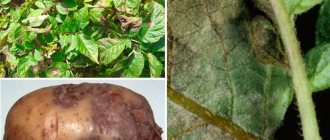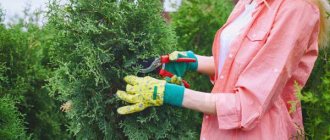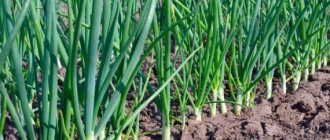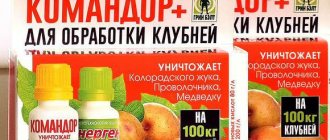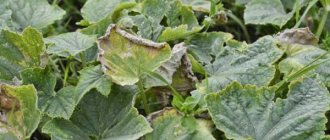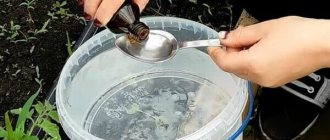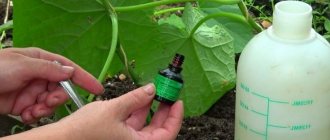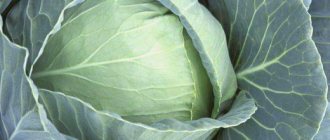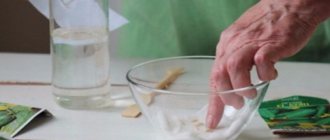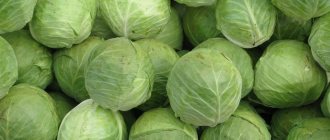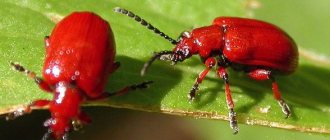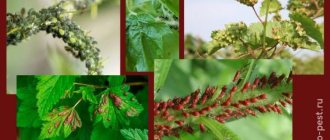Author: Natalya Category: Plant Diseases Published: September 27, 2016Republished: February 28, 2019Last edits: July 16, 2020
- Prevention of late blight on tomatoes
- Late blight on potatoes - treatment
- Copper wire against late blight
Late blight (lat. Phytophthora) is a genus of fungus-like microorganisms that cause late blight in plants. More than seventy species of late blight have been described, but, according to experts, there are up to five hundred varieties that have not yet been described. The name "late blight" consists of two Greek words, translated meaning "plant" and "destroy." Late blight primarily affects nightshade crops - potatoes, tomatoes, eggplants and peppers.
What is late blight?
Late blight or late blight is a common fungal disease that affects about fifty garden crops. Tomatoes suffer more than other vegetables. The fungus spreads by spores and is capable of quickly and en masse infecting tomato plantations. A couple of days are enough for all the bushes to be infected.
The fungus attacks the fruits and leaves of bushes, which leads to a significant reduction in yield. For the time being, the pathogen hides in the ground. It becomes active only in the second half of July, when summer nights become damper and cooler.
How does the disease manifest itself on tomatoes?
The presence of late blight on plants can be guessed by the characteristic symptoms. True, when signs of the disease appear, crop losses cannot be avoided.
Symptoms of late blight:
- the fruits are covered with black or gray-brown spots;
- later, the affected fruits rot and emit an unpleasant odor;
- Dark spots first appear on the leaves, then they dry out and fall off;
- brown spots appear on the stems;
- during rain, the leaves of bushes affected by late blight become shiny and oily;
- Tomato flowers become dark, dry out and fall off.
Reasons for appearance
The main factor favoring the appearance of late blight is high humidity. If it rains in the summer, late blight begins to spread rapidly. This is a “mass destruction” disease; it affects almost all tomato bushes, leading to very large crop losses.
Other reasons for the spread of late blight:
- dense plantings and poor ventilation;
- planting next to potatoes - most often they are the first to become infected with late blight;
- significant discrepancy between day and night temperatures;
- heavy morning dew;
- low daytime temperatures;
- excessive watering in the second half of summer;
- irrigation by sprinkling;
- nitrogen overdose;
- excess lime in the soil;
- lack of manganese, iodine, copper, potassium in the soil.
The fungus that causes late blight can spread by wind, water, and through garden tools.
Preventive measures
Liming creates favorable conditions in the soil for the development of late blight in plants. Regular application of peat with coarse sand will help restore the natural balance. If there were outbreaks of the disease last season, then before planting the soil must be treated with copper sulfate or Bordeaux mixture.
Fungi live in humid environments and poor aeration. Moderate watering of plants and the absence of dense plantings will prevent late blight. When growing crops in greenhouses, be sure to ventilate the room every day to prevent diseases. For violets, after irrigation, drain the remaining liquid from the pan and remove drops from the foliage.
The rule of crop rotation and the choice of good predecessors will prevent the appearance of late blight in plants. Related species cannot be planted in one place for two years in a row. The use of fungus-resistant varieties will pay off over time in the absence of mass invasion and a good harvest.
Late blight is a dangerous disease that affects all crops. Chemical fungicides will stop development at any stage, folk ones will prevent the appearance and cope with early symptoms. Compliance with the basics of agricultural technology will protect against the spread of the disease.
Treatment with chemicals
Chemicals are highly effective and are usually used when signs of the disease appear. Their disadvantage is toxicity and the ability to accumulate in soil and fruits.
Fitosporin
This is a biofungicide with antifungal and antibacterial effects. The drug contains Bacillus subtilis, a natural enemy of the pathogen late blight.
Effect of using Fitosporin:
- inhibits the spread of late blight;
- helps improve soil condition;
- the treated leaves and shoots are covered with a protective film that prevents damage by bacteria and fungi.
The drug can be used at different stages - during seed treatment, when transplanting seedlings, during the period of damage. Fitosporin solution is used to treat not only tomato plantations, but also the soil in tomato rows, garden tools, and dry tops collected for placement in a compost pit.
How to use Fitosporin:
- after the first treatment, repeat spraying is carried out - about a week later;
- It is recommended to water the soil with Fitosporin solution once a month;
- For prevention, foliage is sprayed if unfavorable weather conditions arise.
Dosage for spraying – 3 tsp. on a bucket of water. For better adhesion, it is recommended to add 1 tbsp to the solution. l. liquid soap.
Hom
The drug HOM is a fungicide based on copper oxychloride. It is a light green powdery product that is insoluble in water. HOM is part of many combined fungicides - Ordan, Kuprolux, Homoxil and others.
The drug has a preventive and protective effect. It protects plants from fungus from the moment spores germinate until the symptoms of late blight appear. If signs of disease appear on the bushes, spraying with HOM will no longer be enough; a systemic fungicide is additionally needed.
Features of using HOM:
- The drug is effective until the disease appears. If the leaves begin to turn brown, it is too late to apply HOM.
- It is allowed to use HOM no more than 4 times during the season.
- An interval of 10 days should be observed between sprayings. This frequency is justified when there is a high risk of infection and during rainy summers.
How to prepare and use HOM solution:
- Dilute 40 g of dry drug or 50 g of suspension in 1 liter of water.
- Mix thoroughly and bring the volume to 10 liters.
- Spray the bushes with the prepared mixture - 1-1.5 liters for every 10 square meters. m of tomato plantation.
- You need to spray the leaves not only from above, but also from below.
The HOM solution should not flow from the bushes into the soil. This can trigger the suppression of beneficial soil fauna, such as earthworms.
HOM is cheap, non-phytotoxic and does not accumulate in fruits and soil. The disadvantages of the drug include a short period of protection, washing off by rain and a large amount of solution that must be prepared for treatment. HOM provokes corrosion of metal products.
Ordan
The powdered domestic drug Ordan is used for the treatment and prevention of late blight and other fungal diseases. Contains copper oxychloride and cymoxanil. The first component has an external effect, the second - internal.
Ordan inhibits and destroys various pathogens, heals infected areas, and has a complex effect. Pathogens do not have resistance to this drug. Ordan is low toxic and is completely removed from the soil during the season.
Features of using Ordan:
- the drug is used at all stages of tomato development, except flowering - so as not to poison the bees;
- the treatment is not carried out in sunny weather so as not to cause burns;
- It is prohibited to treat wet plants;
- the maximum number of sprayings per season is 2-3;
- Consumption rate in open ground is 80 ml of working solution per 1 sq. m.
How to prepare and use Ordan's solution:
- Dilute 50 g of powder in a bucket of water.
- Spray the leaves and stems on the day you prepare the solution.
Ridomil Gold
This systemic contact fungicide is made in Switzerland. Contains two active ingredients - mancozeb and mefenoxam, respectively, for external and internal protection. The drug affects a wide range of pathogens and does not allow relapses. It is effective in advanced stages, does not burn, does not freeze, and does not precipitate.
Cons of Ridomil Gold:
- expensive;
- toxic;
- high consumption per 1 sq. m;
- accumulates in the ground;
- kills beneficial fungi in the soil.
How to prepare and use the solution:
- Dilute 50 g of powder in 5 liters of water.
- Mix thoroughly.
- Add up to 10 liters and spray the beds in the morning - if there is no dew, or in the evening.
- Use the prepared solution within 2-3 hours.
Thanos
Thanos is a contact-systemic fungicide intended for the prevention and treatment of fungal diseases. Contains two active ingredients - cymoxanil and famoxadone. The first substance has a triple effect - it treats, prevents and protects, the second - kills fungal spores.
Water-soluble granules do not freeze or crystallize, do not generate dust and are perfectly soluble in water. The drug has a wide spectrum of action, in addition to late blight, it saves tomatoes from phomosis, mildew, various rots and other diseases.
Advantages of Thanos:
- combined action;
- does not accumulate in fruits and soil;
- economical;
- fast-acting;
- convenient release form.
Thanos has no flaws. The main thing is to follow the dosage and act according to the instructions.
How to prepare the solution:
- dissolve the drug according to the dosage indicated on the package;
- Pour the mixture into the sprayer tank and add water.
The protection is effective for two weeks. During the season, the drug is used up to 4 times. The minimum intervals between treatments are 15 days. The first spraying is recommended 2 weeks after planting the seedlings.
Reviews from gardeners
Anna, 42 years old, Rostov
When growing tomatoes in open ground, I don’t wait for thunder to strike in the form of late blight. Two weeks after planting the seedlings, I begin to treat them with solutions based on natural remedies (I dilute 1 liter of kefir or milk in 9 liters of water and add 25 drops of iodine). Then throughout the growing season - once every 14 days. To strengthen the immune system, in early and mid-June I feed with mullein infusion, for this I dilute 0.5 kg of fresh manure in 12 liters of water. I spray potato tops and eggplants with the same solution. I regularly thin out and tie up the bushes. Prevention brings the most positive results.
Anatoly, 56 years old, Moscow region
If the bushes already show signs of disease, we spray the fruits with a strong saline solution: dilute 1 glass of salt in a jar of 2-3 liters of warm water, then pour it into a bucket, bringing the total volume to 10 liters. In this case, it is better to cut off all the leaves. The salt crust prevents the fungus from spreading further, and the tomatoes can ripen on the bush. If the plants have to be uprooted immediately, then we remove all the tomatoes of varying degrees of ripeness, dip them for 10-15 seconds in a hot (about 50 degrees) rich pink solution of potassium permanganate, then dry them and leave them in a dry, warm place so that they quickly reach the desired condition.
Irina, 48 years old, Nizhny Novgorod
Last year it turned out that when I arrived at the dacha after the rains, I found late blight suddenly appearing on the tomatoes. I cut off all the black leaves first. I sprayed the fruits until they were wet with a solution of furatsilin (one tablet per liter of water), then did this every weekend. This helped save both the already large tomatoes and those that had just started growing at that time. All grew and matured on the bushes.
Traditional methods against late blight
Fans of natural farming successfully replace chemicals with various folk remedies. Their plus is absolute harmlessness to humans, the minus is the need for regular treatments.
Here are some of them:
- Salt. The salt solution, falling on the aboveground parts of the plant, covers them with a thin protective layer that prevents the penetration of fungi into the plant tissue. Saline solution is a prophylactic agent that provides only external protection to the plant. Prepare a solution by diluting 250 g of salt in 10 liters of water.
- Soda. 1 tbsp. l. dissolve baking soda in a bucket of water. To prevent the solution from dripping from the leaves onto the ground, add liquid soap to it - 1-2 tbsp. l. Thanks to the detergent, the composition will “stick” to the leaves and shoots. Spraying is carried out with a frequency of 1 week, and also after each rain.
- Kefir or whey. This method is based on the ability of lactic acid bacteria to suppress fungus and other pathogenic flora. Used for preventive and therapeutic purposes. Dilute whey/kefir in water in a ratio of 1:1/1:10. If you don't have kefir, you can replace it with milk. For 1 liter of milk you need to add 20 drops of iodine and dilute it in the same way as kefir. Milk processing can be done daily.
- Ash. Dissolve 5 kg of wood ash in a bucket of water. Leave for 3 days, stirring the ash solution from time to time. Bring the volume to 30 liters, pour in a couple of tablespoons of liquid soap and spray the tomatoes every week.
- Hay. The method is based on the ability of Bacillus subtilis to prevent the development of the pathogen. Take 1 kg of rotted hay and fill it with a bucket of warm water. Add 100 g of urea and leave for 3 days.
- Hot water. The advantage of the method is its low cost. Bring the water to a boil, cool slightly and pour it into a watering can with a rainfall attachment. Water the soil with hot water so that the water does not get on the plants. Watering frequency – 1 time per week.
- Yeast. They are used as follows: dilute 100 g of yeast in 10 liters of warm water. Leave for 1-2 days and spray the bushes.
- Vinegar. Dilute 1/2 cup of 9% vinegar in 10 liters of water. Spray the entire above-ground part of the tomatoes. Alternate treatment with vinegar with other folk remedies.
- Garlic tincture. Garlic tincture is universal; it simultaneously repels pests and protects plants from bacteria and fungi. Grind the garlic arrows and heads in a meat grinder. Pour 1.5 cups of raw material into a bucket of water and leave for 24 hours. Spray tomatoes once every six months.
Rating of the best remedies for late blight
| Nomination | place | Name of product | price |
| The best preventive remedies for late blight | 1 | Revus | 38 ₽ |
| 2 | Acrobat MC | 60 ₽ | |
| 3 | Trichodermin | 1 287 ₽ | |
| 4 | Ordan | 700 ₽ | |
| 5 | Fitosporin | 25 ₽ | |
| 6 | Quadris | 5 556 ₽ | |
| The best remedies for late blight | 1 | Profit Gold | 70 ₽ |
| 2 | Ridomil Gold | 34 ₽ | |
| 3 | Tattu | 44 ₽ | |
| 4 | Consento | 434 ₽ | |
| 5 | Cuproxat | 486 ₽ | |
| 6 | Thanos | 2200 ₽ |
other methods
Along with fungicides and folk remedies, other methods are also used to combat late blight. The advantages of alternative methods are simplicity, cheapness and efficiency.
Bordeaux mixture
This popular remedy is a mixture of quicklime and copper sulfate. Only the affected parts of the plants are sprayed with the prepared solution. During the season, 4 treatments are carried out. Intervals between spraying are 7-12 days.
How to prepare and use the solution:
- Mix 100 g of copper sulfate and 150 g of lime (quicklime) in a bucket of warm water. Follow the sequence of actions - first dissolve the vitriol, then the lime.
- Spray tomatoes using protective equipment. The weather should be clear and calm. The optimal time is morning and evening. Consumption rate – 1 liter of solution per 5 square meters. m.
It is forbidden to prepare a solution of Bordeaux mixture in a metal container. It is recommended to use utensils made of plastic, glass or wood.
Copper sulfate
This universal and inexpensive remedy has antimicrobial and antifungal effects and helps against a wide variety of diseases. Practical experience shows that the product effectively prevents late blight.
Benefits of copper sulfate:
- suitable for different crops;
- kills spores located on plants and in the soil;
- is considered a low-hazard substance;
- It is partly a fertilizer, as it contains copper, which is necessary for the functioning of cells.
A lack of copper leads to inhibition of the development of tomatoes - their ovaries and fruits do not form, and the leaves turn brown and die.
Dosage, g/10 l:
- for soaking seeds – 1;
- for spraying bushes – 10;
- for soil disinfection – 100.
How to prepare a 1% solution for irrigation:
- Dilute 100 g of powder in 1 liter of warm water heated to +40°C.
- Make a blue solution in a bucket by adding 9 liters of water.
- If the crystals have not completely dissolved, strain the solution through a piece of gauze.
- Use the composition within 9 hours. The next day the solution will be ineffective.
Mulching
Mulching is a universal agricultural technique that allows you to achieve several goals at once. You can use peat or compost for mulch.
Mulching effect:
- preventing soil drying out;
- avoiding excess watering;
- protection against fungi living in the soil.
Mulching is especially necessary when planting tomatoes without tying them up, when the bushes are partially in contact with the ground. If you do not add a layer of mulch, the pathogen, climbing the leaves in contact with the soil, penetrates the stem. If this happens, then late blight cannot be stopped. All that remains is to collect the fruits and put them for ripening.
Using Copper Wire
Phytophthora fungi are extremely sensitive to all copper-containing drugs. They are afraid of copper in any shape or form. This is the basis of another method of combating late blight. For this you will need a coil of thin copper wire.
Procedure:
- Wrap the wire around the tomato stems at the root collar.
- Cut a piece of wire about 3-5 cm long and pierce the stem at the base with it. Bend the ends of the wire to the ground.
This method can only be used for well-developed bushes. Otherwise, you can destroy the plants.
How to disinfect a greenhouse
In order to effectively combat late blight and disinfect the greenhouse, you must first remove all plant residues and burn them. The same should be done with ropes and pegs, because parasite spores could remain on them. Tools used to carry out work in the greenhouse must be treated with copper sulfate in a ratio of 75 g per 10 liters. water. It is better to replace the top layer of soil in the greenhouse with a new one every 3 years.
To combat phytosporosis in greenhouses, a tobacco smoke bomb is used. 1 tobacco stick is designed for 35 sq.m.
Rules for processing plants
In order for the effect of drugs used against late blight to be maximum, certain rules must be followed:
- spraying treatment is carried out only on calm and sunny days;
- when using toxic drugs, it is necessary to wear protective equipment;
- It is prohibited to prepare chemical and some other solutions in metal containers to avoid oxidation.
Prevention of late blight on tomatoes
Preventive protection of tomatoes from late blight consists primarily of following agricultural practices. Measures to prevent fungal damage to tomato plantings depend on where they are grown - in a greenhouse or in open ground. In both cases, it is necessary to treat the seeds by placing them in a solution of potassium permanganate for 30 minutes before sowing.
In the greenhouse
The greenhouse creates ideal conditions not only for plants, but also for pathogens - fungi, bacteria and other infections. The causative agent of late blight actively develops in humid, stagnant air, which often reigns in greenhouses.
Prevention measures:
- If the greenhouse/greenhouse has been in use for more than a year, cleaning and disinfection are necessary.
- The room is cleared of cobwebs and plant debris.
- The soil in the greenhouse is completely changed.
- Disinfection is carried out using different methods. One of the simplest and most effective is fumigation. A metal container filled with smoldering coals is brought into the greenhouse. Woolen fabric is placed on top of them. The room is fumigated for 24 hours. The second option is spraying with disinfectants, Fitosporin or Baikal.
- When planting, seedlings are sprinkled with tobacco dust or wood ash.
- Ventilate the greenhouse to prevent condensation.
In the open ground
Prevention of late blight in open ground requires an integrated approach. It is necessary to comply with irrigation standards, crop rotation and other rules of agricultural technology.
Prevention measures:
- Soil deoxidation by adding lime. To restore normal soil acidity, it is necessary to add peat under digging.
- When planting seedlings, dry sand is thrown into each hole - about 3 tbsp. l.
- In an area where onions, potatoes, beets, cucumbers or carrots grew, tomatoes are not planted for at least 3 years.
- Choose a sunny area for tomatoes, without stagnant water.
- Watering - in the morning or late in the evening, at the root. If the summer is humid, watering is canceled.
- The soil is regularly loosened to provide air access to the roots.
Late blight on potatoes
Late blight treatment
The symptoms of late blight of tomatoes and potatoes are very similar to each other: spots form on the foliage, which quickly spread throughout the bush; as the disease develops, the leaf plates curl and dry out. If the tubers are affected by the disease, then hard spots can be found on their surface.
In order to prevent the development of the disease, it is necessary to adhere to the following treatment scheme for bushes:
- The first time treatment with a systemic fungicidal preparation is carried out after the height of the tops is 25–30 centimeters. You can spray potatoes with the following means: copper sulfate (0.2 grams per 1 liter of water), Bordeaux mixture (1%) or copper sulfate (2 grams per 1 liter of water).
- Shortly before the start of flowering, the bushes must be sprayed with such agents as: Oxyhumate, Epin or Exiol. But if weather conditions are unfavorable for the development of late blight, then treat the plants only with a resistance inducer, for example, Krezacin or Silk: after 1–2 weeks, the bushes are sprayed with a contact fungicide, for example, Ditan M-45 or Efal, and you can also use copper oxychloride ( strictly follow the manufacturer's instructions), during preventive treatment the dosage is reduced by 2 times. If the potatoes are very badly affected, then they are sprayed with Ridomil MC, Oksikhom or Ridomil Gold MC, and after 1.5–2 weeks they are sprayed again with the same means. When the bushes fade, they can be sprayed with a solution of Bravo, and after 1–1.5 weeks the treatment with this drug is repeated.
- During the ripening of tubers, it is recommended to use Alufit for treatment against late blight.
Treatment is best carried out on a cloudy, but dry and windless day. If it rains after spraying, the bushes will have to be treated again. Spraying the tops should be carried out until they completely die off.
Prevention measures
To protect potatoes from late blight, you need to choose the most suitable place for planting them, and for cultivation it is best to use those varieties that are most resistant to this disease. Also, do not forget to treat plants in a timely manner for preventive purposes. It is recommended to grow this crop on leveled areas. If you choose a lowland or damp area for this, this can cause the development of fungal diseases. The soil needs to be light and drained, and the area itself should be well lit and blown by the wind. If possible, choose a site for growing potatoes that is located away from other plants belonging to the Solanaceae family.
Potatoes will grow best in areas where perennial grasses, beets, winter crops, corn and flax were previously grown. And the worst predecessors of this plant include nightshades. After peppers, potatoes, tomatoes and eggplants, you can grow them again in the same area only after 4–6 years. If you do not have the opportunity to adhere to a full crop rotation, then it is recommended to grow potatoes on the plot at least once every 2 years, and during the break they are sown with mustard or radish, which must be mowed and buried in the ground. Thanks to radish and mustard, the risk of potato damage by late blight or other fungal disease is reduced by 3 times.
Before planting, it is recommended to treat the soil on the site (how to do this is described in detail above). Experts also recommend using only absolutely healthy planting material for growing. In order to understand which tubers are affected by late blight, it is recommended to keep them for 15 days at a temperature of 15 to 18 degrees. As soon as it becomes clear which tubers are diseased, they should be removed, and the remaining planting material should be treated with Fitosporin-M or Agat-25K.
PHYTOPHORA ON POTATOES WHAT TO DO?
Treatment before planting
In order not to constantly worry whether your potatoes will be affected by late blight or not, for growing it is recommended to choose varieties that are resistant to this disease, for example: Lazar, Arina, Rosara, Visa, Verb, etc. Also, for preventive purposes, phosphorus and potassium fertilizers are applied to the soil until planting potatoes or during it. And after the formed tubers begin to gain weight, the potassium component is increased by 1.5 times. If there is too much nitrogen in the soil, this will cause a delay in the development of tubers, as a result of which their susceptibility to late blight increases. After the tubers have completed gaining mass, the surface of the soil is loosened and the tops are mowed, thanks to this the process of increasing the density of the tubers’ skin is accelerated. Treating the soil on the site with a solution of Reglon Super can also help with this. And also do not forget to promptly dig up and destroy diseased plants, remove weeds from the site, and do not water the bushes using sprinkling if the weather is cool, dry.
Possible mistakes when fighting late blight
Despite the abundance of means and methods to combat late blight, this disease appears in many gardens every summer. The cause of the disease is often gross mistakes made by gardeners.
Common mistakes:
- The use of sprinkling when watering beds. Tomatoes can only be watered at the root. The optimal method of soil moistening is drip irrigation.
- Incorrect feeding. In order for tomatoes to successfully resist the late blight pathogen, they must be fed with potassium-phosphorus fertilizers. Do not overuse nitrogen fertilizers.
- Watering during illness. If late blight has already appeared on a tomato plantation, watering them is strictly prohibited. High humidity will only enhance the development of pathogens.
- Using several methods. You cannot use different methods of struggle at the same time. Combining chemicals is especially harmful. Plants die from an excess of “chemistry”, and their fruits accumulate a critical amount of poisons.
An experienced gardener will tell you how to fight late blight on tomatoes in the following video:
Despite the destructiveness of late blight for tomatoes, it can be successfully combated. There are dozens of simple and effective methods that can not only treat this fungal infection, but also prevent it.
0
0
Copy link
Caring for a plant in open ground
Tomato seedlings should be planted sparsely. This condition helps to avoid infecting all the bushes at once. If planting is carried out in a greenhouse and there is not much space there, then it is recommended to carry out regular preventive measures, treating old leaves of tomatoes with disinfectant solutions.
To exclude the occurrence of late blight, you need to pay special attention to watering. Agronomists do not advise watering the bush so much that the leaves get wet. It is better to water tomatoes at the root. It should be moderate but regular. If infection does occur, treatment is done taking into account weather conditions. After spraying, it is recommended to avoid watering and precipitation for 2-3 days. The procedure is performed in the evening, without direct sunlight.
Seedling care
In order not to suffer from late blight on tomato bushes in the future, you need to strengthen the immunity of the seedlings. To do this, before planting, the sprouts are treated with a 5% solution of Bordeaux mixture. After the tomatoes are planted in the garden, they are sprayed with Arceride, and after another 2 weeks - with Fundazol. Afterwards, these two drugs are constantly alternated.
